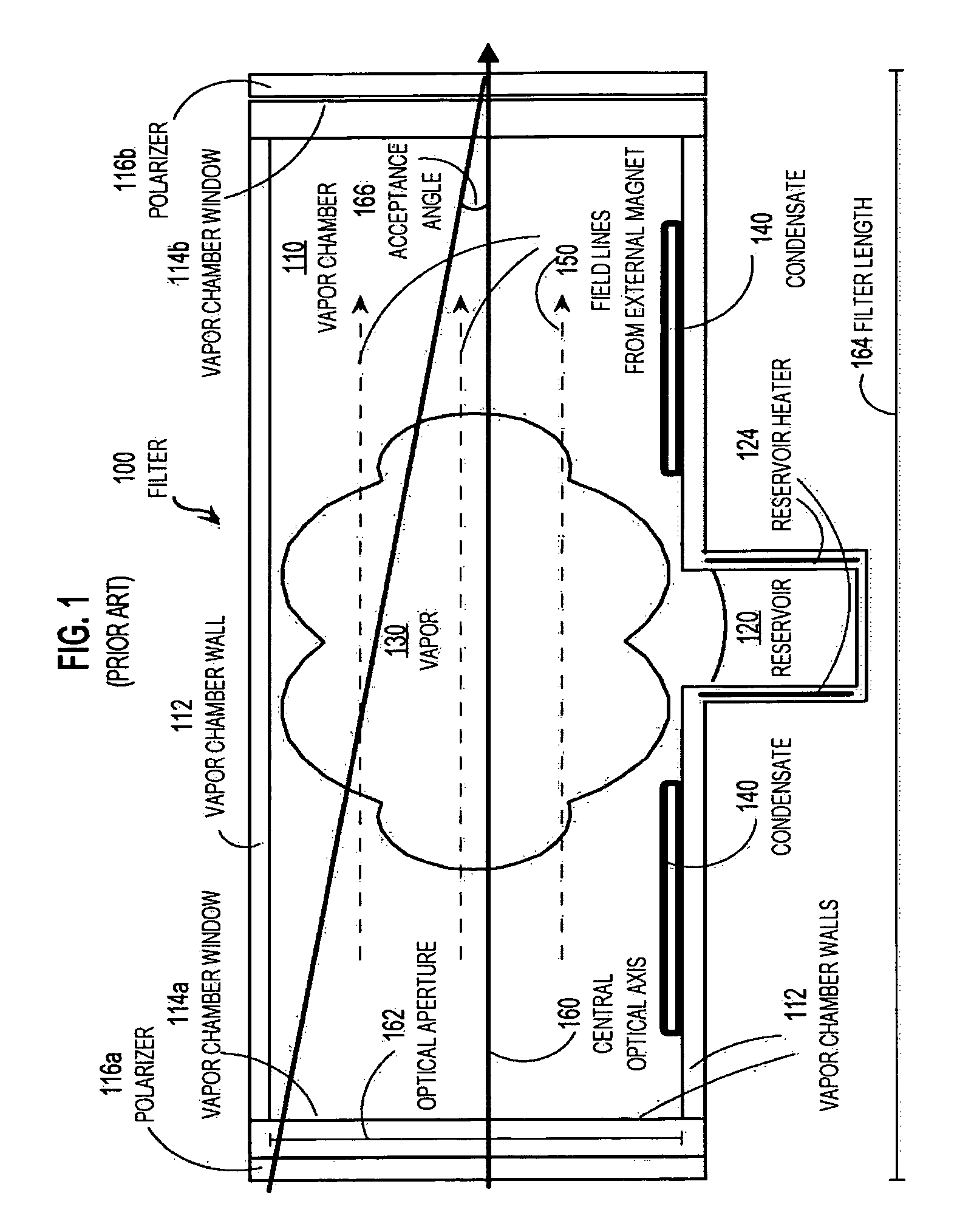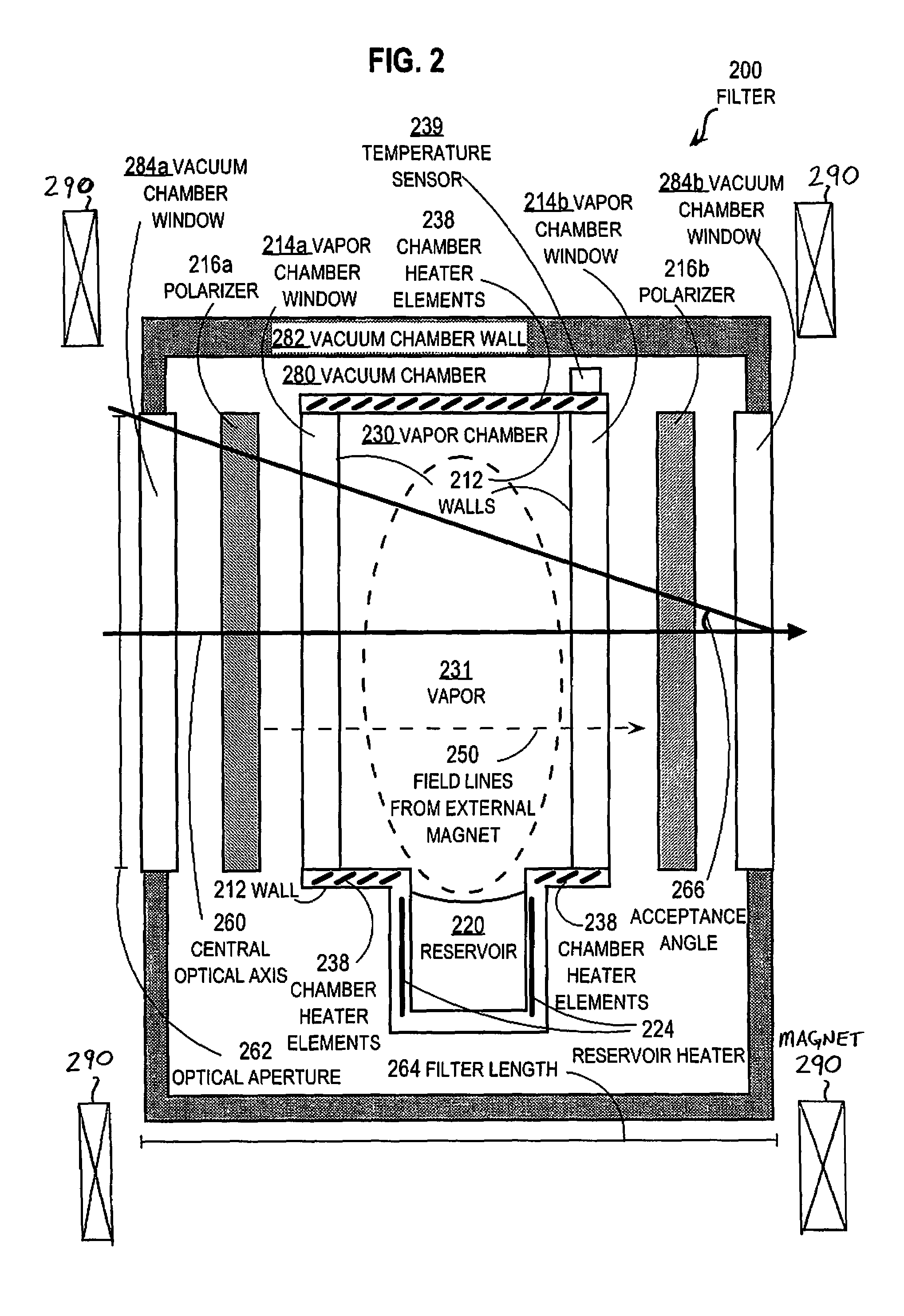Apparatus and system for wide angle narrow-band optical detection in daylight
a wide-angle, narrow-band technology, applied in the direction of optical radiation measurement, fire alarm radiation actuation, instruments, etc., can solve the problems of high cost of ir detectors in such applications, insufficient daylight in the visible spectrum, and small fires in the wilderness can become forest fires
- Summary
- Abstract
- Description
- Claims
- Application Information
AI Technical Summary
Benefits of technology
Problems solved by technology
Method used
Image
Examples
Embodiment Construction
[0027]An apparatus and system are described for wide-view narrowband filtering and detection of optical sources. In the following description, for the purposes of explanation, numerous specific details are set forth in order to provide a thorough understanding of the present invention. It will be apparent, however, to one skilled in the art that the present invention may be practiced without these specific details. In other instances, well-known structures and devices are shown in block diagram form in order to avoid unnecessarily obscuring the present invention.
[0028]Some embodiments of the invention are descried below in the context of a Potassium vapor MOF in a vapor chamber enclosed in a vacuum chamber with heaters to avoid condensation in a filter having an optical aspect ratio of 4 to 1 or less. However, the invention is not limited to this context. In other embodiments, other materials, both in vapor and non-vapor states, serve to change polarization between the two polarizer...
PUM
 Login to View More
Login to View More Abstract
Description
Claims
Application Information
 Login to View More
Login to View More - R&D
- Intellectual Property
- Life Sciences
- Materials
- Tech Scout
- Unparalleled Data Quality
- Higher Quality Content
- 60% Fewer Hallucinations
Browse by: Latest US Patents, China's latest patents, Technical Efficacy Thesaurus, Application Domain, Technology Topic, Popular Technical Reports.
© 2025 PatSnap. All rights reserved.Legal|Privacy policy|Modern Slavery Act Transparency Statement|Sitemap|About US| Contact US: help@patsnap.com



